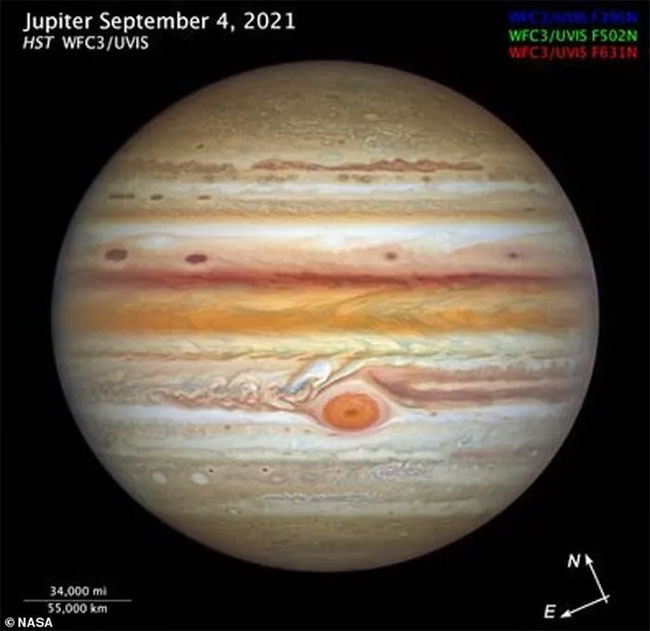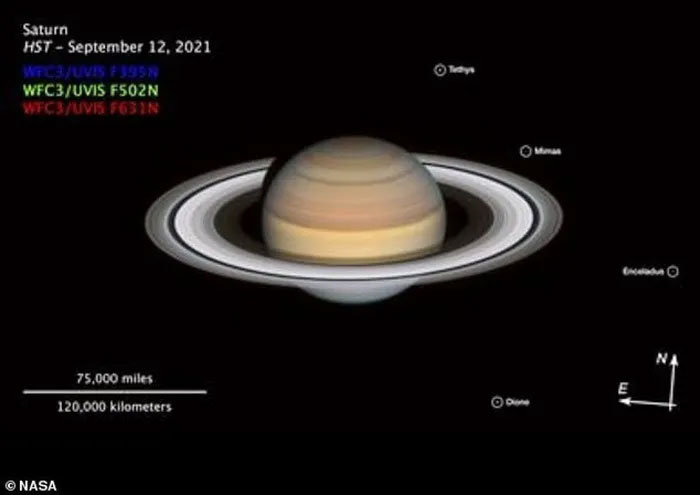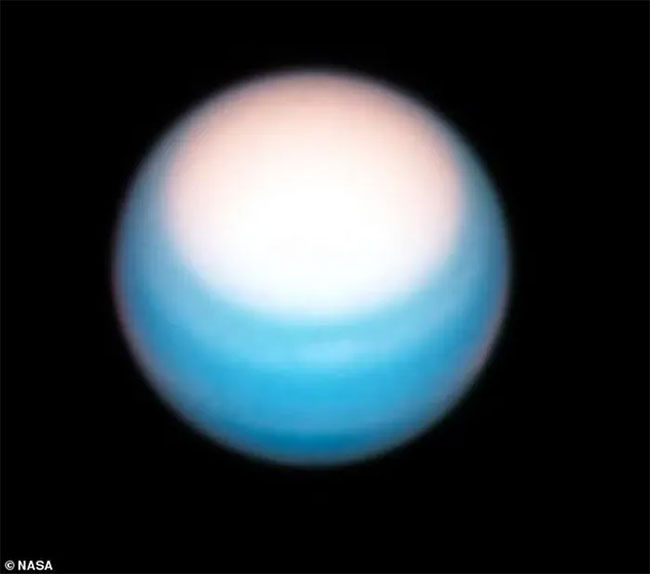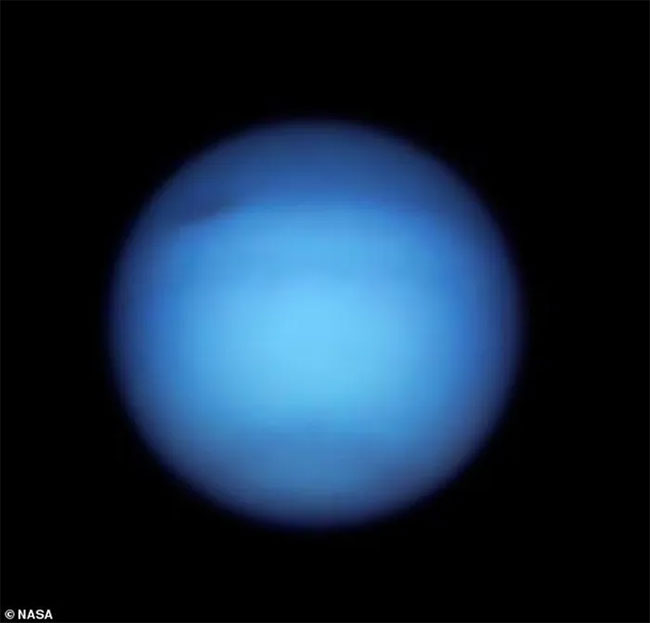The Hubble Space Telescope, operated by NASA and the European Space Agency (ESA), has captured stunning images of four giant gas planets in our Solar System.
Although the Hubble Space Telescope has not yet fully resumed its operations, NASA and ESA continue to release new images taken by Hubble. The latest images of Jupiter, Saturn, Uranus, and Neptune reveal significant changes in their atmospheres.

Image of Jupiter taken on September 4. (Photo: NASA).
“As a ‘weather forecaster’ of the Solar System, Hubble’s sharp observational capabilities of these giant gas planets help astronomers gain a deeper understanding of the weather on these planets,” NASA stated in an announcement.
These images were captured as part of the Outer Planet Atmospheres Legacy (OPAL) program during September and October 2021.
The image taken on September 4 shows the emergence of new storms on Jupiter, often referred to as cyclones. These storms can undergo dramatic changes in appearance.
An image taken on September 12 of Saturn reveals rapid color changes in the bands of the planet’s northern hemisphere.

Image of Saturn taken on September 12. (Photo: NASA).
The image taken on October 25 of Uranus shows the planet’s North Pole, which is currently experiencing spring.

Image of Uranus taken on October 25. (Photo: NASA).
The image from September 7 of Neptune shows the planet’s dark spot, which has actually reversed direction and is moving towards the equator.

Image of Neptune taken on September 7. (Photo: NASA)
The Hubble Space Telescope has been observing the universe for over three decades. It has conducted more than 1.5 million observations of the cosmos, leading to over 18,000 scientific papers published based on its data.


















































